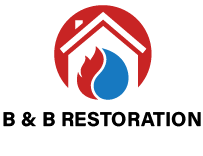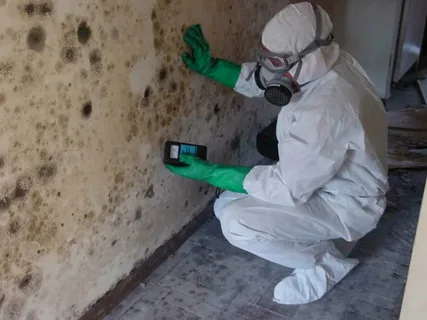Mold Remediation: A Complete Guide to Protecting Your Home and Health
Mold is more than just an unpleasant sight on your walls or ceilings—it is a serious problem that can compromise the safety of your home and the health of your family. Mold growth is often triggered by excess moisture from water leaks, flooding, or high humidity levels. While mold might start as small, dark patches, if left untreated, it can spread quickly, cause structural damage, and lead to health issues such as allergies, asthma, or other respiratory problems. This is why mold remediation is not just about cleaning up mold but about identifying the cause, removing it safely, and preventing it from coming back.
In this article, we’ll explore what mold remediation is, why it is necessary, the steps involved in the process, and how homeowners can protect their properties from future infestations.
What is Mold Remediation?
Mold remediation is the comprehensive process of identifying, removing, cleaning, and treating areas contaminated by mold. Unlike simple mold removal, remediation focuses on addressing the root cause of mold growth and preventing recurrence. This process typically involves specialized equipment, protective gear, and professional techniques to ensure safety and effectiveness.
The ultimate goal of mold remediation is not only to eliminate visible mold but also to restore indoor air quality and prevent future outbreaks.
Why Mold Remediation is Important
Mold remediation is essential for several reasons:
1. Health Protection
Mold releases spores into the air, which can trigger allergic reactions, asthma attacks, and other respiratory issues. For individuals with weakened immune systems, mold exposure can be especially dangerous. Remediation ensures a healthier living environment.
2. Structural Integrity
Mold feeds on organic materials like wood, drywall, and insulation. If ignored, it can weaken the structure of your home, causing costly damage and unsafe living conditions.
3. Odor Removal
Persistent musty odors are often a sign of hidden mold growth. Remediation not only removes the mold but also eliminates the unpleasant smell, improving overall indoor air quality.
4. Property Value
Homes with visible mold or a history of mold problems often lose market value. Professional remediation helps maintain property value and ensures compliance with safety standards.
Signs You Need Mold Remediation
It’s not always obvious when mold remediation is needed. Here are some common signs:
- Visible Mold Growth – Dark spots on walls, ceilings, or around windows.
- Persistent Odor – A musty or damp smell in certain areas of the home.
- Water Damage – Leaks, flooding, or condensation can lead to mold growth.
- Health Symptoms – Sneezing, coughing, or worsening asthma when indoors.
- Discoloration or Peeling Paint – Hidden mold can cause surface changes.
If you notice any of these, it’s time to call a professional mold remediation service.
Steps in the Mold Remediation Process
Mold remediation is a multi-step process designed to remove mold completely and prevent it from returning. Below is a breakdown of the typical procedure:
1. Inspection and Assessment
Professionals begin by identifying the source of mold and the extent of contamination. This often involves moisture meters, infrared cameras, or air testing to detect hidden mold.
2. Containment
To prevent spores from spreading, the affected area is sealed off using plastic sheeting and negative air pressure systems. This ensures mold does not travel to other parts of the home during cleanup.
3. Air Filtration
High-efficiency air scrubbers and HEPA filters are used to capture mold spores and improve air quality during remediation.
4. Mold Removal
All contaminated materials such as drywall, carpet, or insulation may need to be removed and safely disposed of. Surfaces are then cleaned using antimicrobial agents, scrubbing, or sandblasting (for wood and concrete).
5. Drying and Dehumidification
Moisture is the root cause of mold. Industrial-grade dehumidifiers and fans are used to completely dry the area to prevent mold from returning.
6. Restoration
Once the area is clean and dry, restoration may involve replacing drywall, repainting, or repairing damaged structures.
DIY Mold Removal vs. Professional Remediation
Many homeowners attempt DIY mold removal with bleach or store-bought products. While this may work for very small mold patches (less than 10 square feet), it is not effective for larger infestations or hidden mold.
DIY Mold Removal
- Best for small areas.
- Inexpensive.
- Temporary solution—may not address the root cause.
Professional Mold Remediation
- Handles large or hidden mold problems.
- Uses advanced equipment and safe techniques.
- Identifies and fixes the source of moisture.
- Provides long-term results and peace of mind.
If mold covers a large area, keeps returning, or affects your health, hiring a professional remediation company is the safest option.
Preventing Mold Growth After Remediation
Once remediation is complete, prevention is key to avoiding future problems. Here are some proactive steps:
- Control Humidity Levels – Keep indoor humidity below 50% using dehumidifiers.
- Fix Leaks Promptly – Repair roof leaks, plumbing issues, or foundation cracks.
- Improve Ventilation – Use exhaust fans in kitchens and bathrooms.
- Clean Regularly – Keep surfaces dry and clean to discourage mold growth.
- Use Mold-Resistant Materials – Install mold-resistant drywall or paints in high-moisture areas.
- Monitor Indoor Air Quality – Periodic inspections help catch issues early.
Cost of Mold Remediation
The cost of mold remediation varies depending on the severity of the infestation, the size of the affected area, and the materials involved. On average:
- Minor Mold Remediation: $500 – $1,500
- Moderate Mold Remediation: $2,000 – $5,000
- Severe Cases: $10,000+
Although the cost may seem high, ignoring mold problems can result in much higher expenses due to health issues or structural repairs.
When to Call a Professional
Call a mold remediation specialist immediately if you experience:
- Mold growth covering more than 10 square feet.
- Recurring mold problems despite cleaning.
- Water damage from flooding or leaks.
- Strong musty odors without visible mold.
- Health problems linked to mold exposure.
Professionals not only remove mold safely but also ensure your home is protected against future outbreaks.
Conclusion
Mold remediation is a crucial process for protecting your home and family from the harmful effects of mold. While small mold problems can sometimes be handled with DIY methods, larger infestations require professional attention to ensure complete removal and long-term prevention.
By addressing the root causes of moisture, using professional remediation techniques, and following preventive measures, you can maintain a safe, healthy, and mold-free environment.
Don’t wait until a small spot turns into a major issue—act quickly and invest in proper mold remediation for peace of mind and a healthier home.

